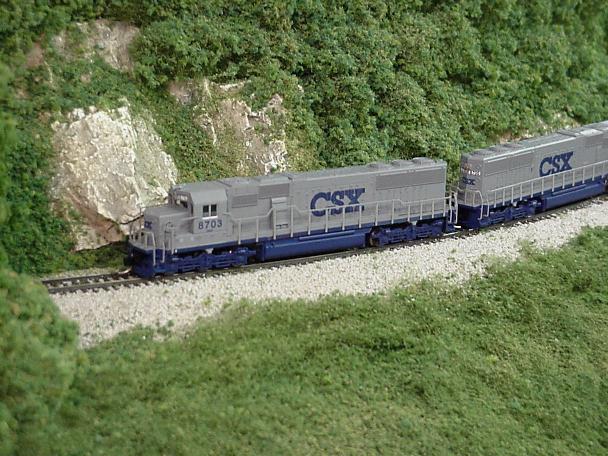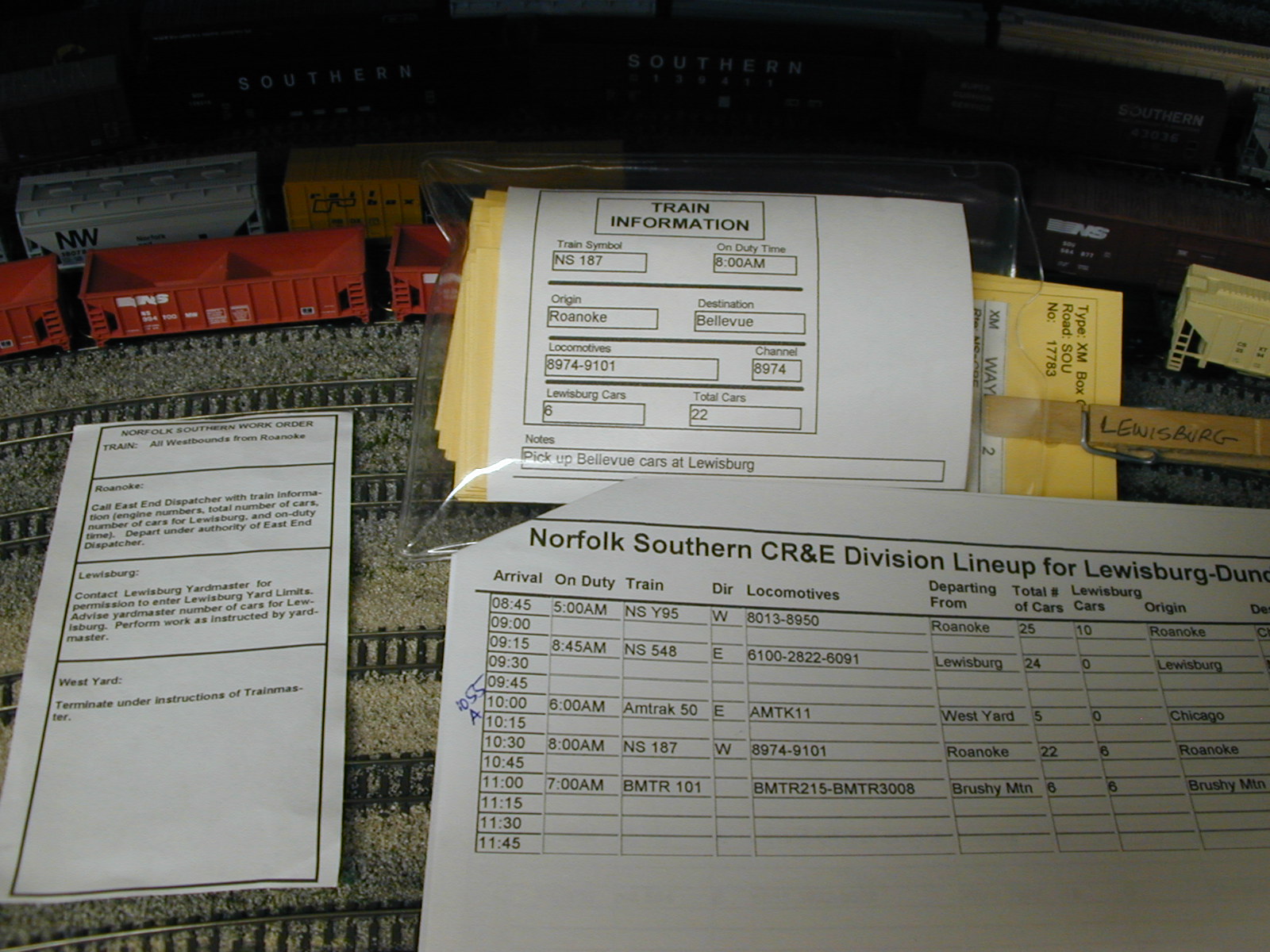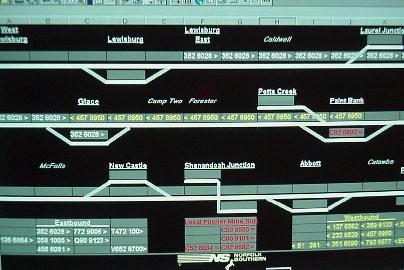
![]()
Designed for Operation
The CR&E was designed for operation and we currently operate the layout once every two months with a crew consisting of a mix of "regulars" and "extra board" operators. We have found that about 6-8 people is the ideal crew size for the railroad.
Our ideal crew consists of a Yardmaster, Dispatcher, three or four train crews, and a Trainmaster. The Trainmaster oversees operations and helps operators get their trains running using the Digitrax DCC system, lines staging yard switches for movements, answers questions, and makes some operational decisions to make things run more smoothly. Now that our mostly regular crew is quite familiar with running trains, the Trainmaster also gets to join in the fun and usually gets to run several trains during each session.

![]()
Joint Trackage
Similar to the Norfolk Southern/CSX Transportation arrangement in the Frisco, TN, area, the CR&E features some joint trackage "back scratching" to help both NS and CSX get their trains to their destinations a little faster.
Coal mined on the former Nicholas, Fayette & Greenbrier (now part of CSX) moves from Rainelle, WV down to the CR&E at Springdale, WV. Most of this coal is bound for Carolina utilities and uses the CR&E as a shortcut between Springdale, WV, and Shenandoah Jct., VA, near New Castle. At Springdale, eastbound coal trains leave CSX's rails and ride NS's CR&E Division up and over the Alleghenies to Shenandoah Jct. Here, the CSX trains diverge onto their Shenandoah Division for the ride south to Wadesboro and Hamlet, NC, and finally to their destinations. Likewise, empty moves are handled via the reverse route. Theoretically this routing eliminates some grueling mountain grades south of Springdale on the NF&G.
As a sort of a trade-off, NS uses the CSXT Shenandoah Division between Shenandoah Jct. and Salem, VA, for access to CSX Intermodal in Salem. Intermodal trains operating between Norfolk and Chicago/Detroit use this routing, as well as a pair of NS merchandise freights that use the CSX "shortcut" between the Roanoke area (actually Salem) and Winston-Salem, NC.
![]()

Two CSX "stealth gray" SD60s are in heavy dynamic as they ease toward Cove Tunnel, about halfway through the Loops between Paint Bank and Glace.
![]()
Car Routing and Traffic Planning
Each car rolling over CR&E Division rails has a specific destination. A car-card and waybill system is utilized so that every car has an identifying card listing the car number and type. This card becomes sort of an envelope that holds a waybill, which is the routing information for the car. We use a software package sold by Shenandoah Software.
The software package allows us to print a car card for each car on the railroad. A nice feature is the ability to pull from another spreadsheet or database, such as an Excel file listing all of the cars on the railroad. A waybill feature is also available, using an extensive database compiled from prototype research. Additions can be made to the industry database. Bruce Faulkner and I have added several hundred destinations from prototype information that we had available to us.

Each crew member receives a "crew pack" consisting of information about the train, car cards/waybills, and a work order explaining the duties of the train crew. The train information form is printed from data loaded into a Lotus Approach file. This file also prints a call sheet for the operating session and gives access to other information.
We run between 12 and 16 trains during a typical operating session. The railroad sees eight merchandise trains, several coal and grain trains, two intermodal trains, two Amtrak trains, several locals, and several pusher moves during a 24-hour day. Each four hour operating session simulates a 12 hour period on the railroad. Half of the merchandise, intermodal, and Amtrak trains are operated in each session, allowing me to run two sessions with only minimal restaging of coal and empty trains. At the end of a session, trains are stopped where they are and the next session picks up where the previous session stopped. The railroad is currently operated every other month.
![]()
Dispatching
The CR&E Division utilizes simplified Track Warrant Control for train movements. This follows Norfolk Southern's practice for moving traffic on non-CTC routes. The CR&E Division's East End Dispatcher in Lewisburg sits in a separate room and communicates with train crews via two-way FRS radios. The dispatcher keeps up with train movements by using a simple Lotus/Excel spreadsheet showing the track diagram. By copying and pasting train information into the track diagram, the dispatcher has a record of what track warrant authorities have been granted. The spreadsheet was crew member Bruce Faulkner's idea, and basically duplicates the magnetic boards used by many model railroad dispatchers. Stephen Link modified the version that Bruce originally created for his own railroad.

An ultimate goal would be to have controlled turnouts and signals utilizing computerized Centralized Traffic Control, although this will definitely be a long way down the road. The prospect gets easier all the time with Digital Command Control interfaces.
![]()